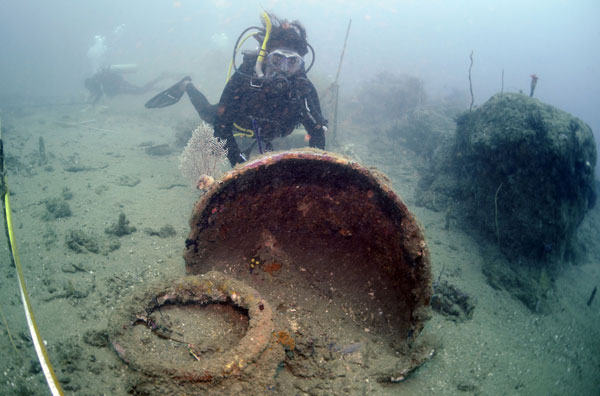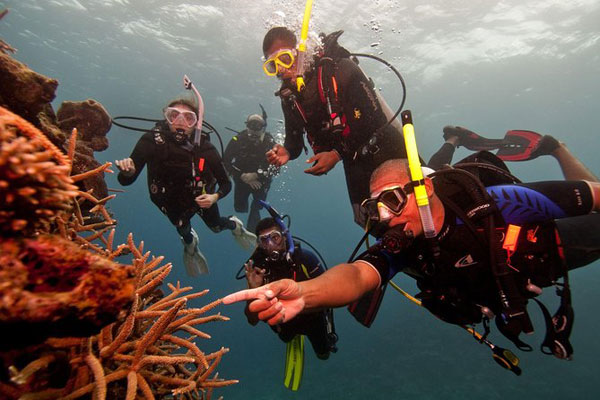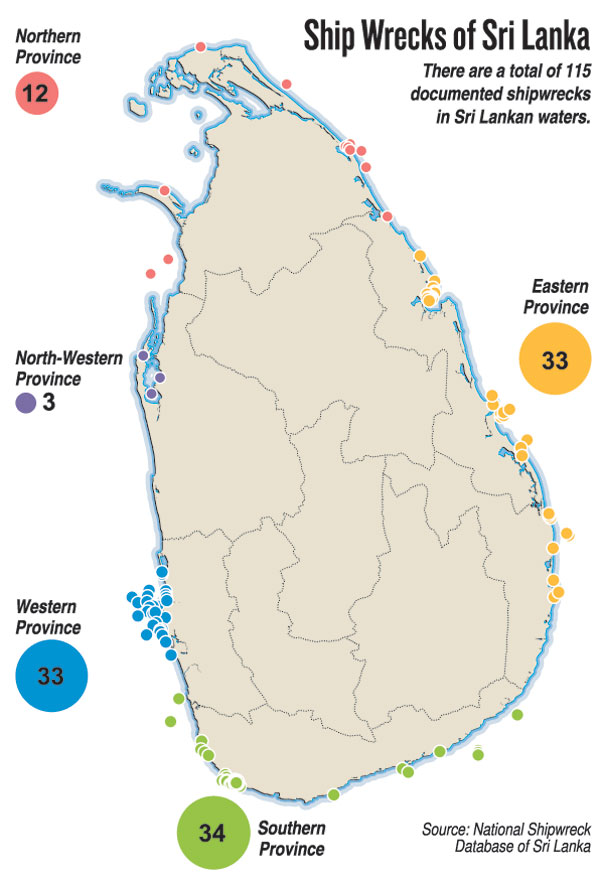News
Warmer oceans, acidification endanger Sri Lanka’s maritime heritage
View(s):By Malaka Rodrigo
Sri Lanka’s waters are home to over 200 shipwrecks, each holding a unique story of trade, war, and maritime heritage. Among the most significant are the Godawaya Shipwreck, which dates back over 2,000 years, and HMS Hermes, the world’s first purpose-built aircraft carrier built by British and sunk by Japanese dive bombers during World War II (1931-1945).
Over time, these shipwrecks have transformed into artificial reefs, supporting marine biodiversity and playing a crucial role in ocean ecosystems. However, climate change is now emerging as a major threat to their survival, potentially shortening their lifespan.
“Shipwrecks face multiple threats from climate change,” says Prof. Sevvandi Jayakody of the Department of Aquaculture and Fisheries at Wayamba University of Sri Lanka. “These include extreme weather events, ocean acidification, invasive species, and rising sea temperatures, all of which can accelerate the degradation of wrecks.”

Marine archaelogists exploring Godawaya shipwreck2. Pic courtesy Maritime Archaeology Unit of Sri Lanka
Sri Lanka is increasingly vulnerable to extreme weather events, with storms becoming more intense due to climate change. A literature review published in the Sri Lanka Journal of Economic Research highlights a significant rise in tropical cyclone intensity in the Bay of Bengal between 1981 and 2010, a trend scientists attribute to higher sea surface temperatures. Other studies suggest this intensification has continued over the past two decades.
“More intense storms and cyclones generate powerful waves and strong currents that can impact shipwrecks, specially those in shallow waters,” explains Dharshana Jayawardane, a researcher of shipwrecks for over two decades. “Even after heavy monsoon seasons, we’ve seen cases where shallow-water wrecks suffer damage due to rough seas. If storm intensity increases, the risk to these wrecks will only grow.’’
Strong waves also shift sand and sediment, exposing previously buried wrecks to deterioration or burying them deeper, which can hinder archaeological research and conservation efforts, he said.

Diving tourism
Human-induced climate change, driven by greenhouse gas emissions such as carbon dioxide (CO₂), not only warms the planet but also increases ocean acidity when the ocean absorbs carbon dioxide from the atmosphere, which lowers the ocean’s pH.
“Globally, research has shown that ocean acidification speeds up the corrosion rate of iron and steel wrecks,” notes Prof. Jayakody. “This is especially concerning for wrecks like HMS Hermes, which may still contain live ammunition. As the metal weakens, there is a risk of explosive materials being exposed.”
Another alarming consequence of corrosion is the potential release of bunker oil from sunken ships. If intact fuel tanks begin to leak due to rapid deterioration, it could cause secondary environmental pollution, further harming marine ecosystems.
Although ocean acidification studies in Sri Lanka are still in their early stages, the National Aquatic Resources Research and Development Agency (NARA) is monitoring pH levels in coastal waters.
“We take regular measurements from stations on both the east and west coasts,” says Dr. Kanapathipillai Arulananthan director general of NARA. “Additionally, the Norwegian research vessel Nansen is expected to provide further insights into changing ocean parameters in the Northern Indian Ocean.”

Another hidden threat is the rise of invasive species that could now establish in different areas due to warming waters. Changes in ocean temperature and acidity alter microbial activity, leads to faster decomposition of wooden shipwrecks according to research.
“Wooden wrecks are particularly vulnerable to wood-boring organisms like shipworms, which thrive in warmer conditions,” warns Prof. Jayakody. “As ocean temperatures rise, these organisms could spread to areas where they previously could not survive, accelerating the breakdown of historical wrecks.”
Ballast water from ships can introduce these invasive species to new environments. While differences in salinity, temperature, and acidity once prevented their survival, climate change is making new habitats more suitable for these species, increasing the risk of bioerosion.
Beyond their historical importance, shipwrecks serve as artificial reefs, providing shelter and breeding grounds for marine life. However, climate change threatens their ability to sustain biodiversity. Rising sea temperatures can lead to coral bleaching and degradation, weakening the ecosystem surrounding wreck sites.

Sri Lanka has experienced several significant coral bleaching events over the past few decades, mainly due to higher sea temperatures and other environmental stressors. 1998 Mass Bleaching Event that was triggered by a strong El Niño effect , led to the destruction of over 50% of some coral reefs in Sri Lanka. Another substantial bleaching occurred in 2016, causing extensive coral damage. Sri Lanka is frequently experiencing heat waves, so more such coral bleachings are expected.
Also, stronger storms and shifting currents could damage or bury shipwrecks, leading to habitat loss for marine organisms. Combined with disruptions in food chains and breeding patterns, these factors pose a significant risk to the stability of these underwater ecosystems according to Prof. Jayakody.
With shipwrecks spanning ancient, colonial, and modern eras, Sri Lanka holds a treasure trove of global maritime heritage.
According to Rasika Mutukumarana of the Department of Archaeology, about 40 shipwrecks in Sri Lankan waters are of significant historical value. However, the full extent of he impact of climate change on these wrecks are still unknown.
“These changes can be slow but significant,” Mr Mutukumarana explains. “Long-term monitoring is crucial to assess and mitigate damage, but securing funding for such research remains a challenge.”
Prof. Jayakody echoes this concern, emphasising the unpredictability of climate change’s effects on shipwrecks. “We may not even have seen the full extent of these impacts yet. Biological changes triggered by global warming could bring consequences we haven’t even imagined. That’s why continuous monitoring and conservation efforts are essential to safeguard this invaluable maritime heritage.”
As climate change intensifies, Sri Lanka’s shipwrecks face an uncertain future. Without proactive measures, these historical and ecological treasures could deteriorate beyond recognition, taking with them invaluable insights into the past —and a crucial refuge for marine life in the present.
Mr. Mutukumarana said every shipwreck is unique and when one disintegrates so goes its story, too. The only way forward would be to reduce the rate of global warming.
(This story was produced under the CIR- CANSA Media Fellowship Programme.)
The best way to say that you found the home of your dreams is by finding it on Hitad.lk. We have listings for apartments for sale or rent in Sri Lanka, no matter what locale you're looking for! Whether you live in Colombo, Galle, Kandy, Matara, Jaffna and more - we've got them all!

